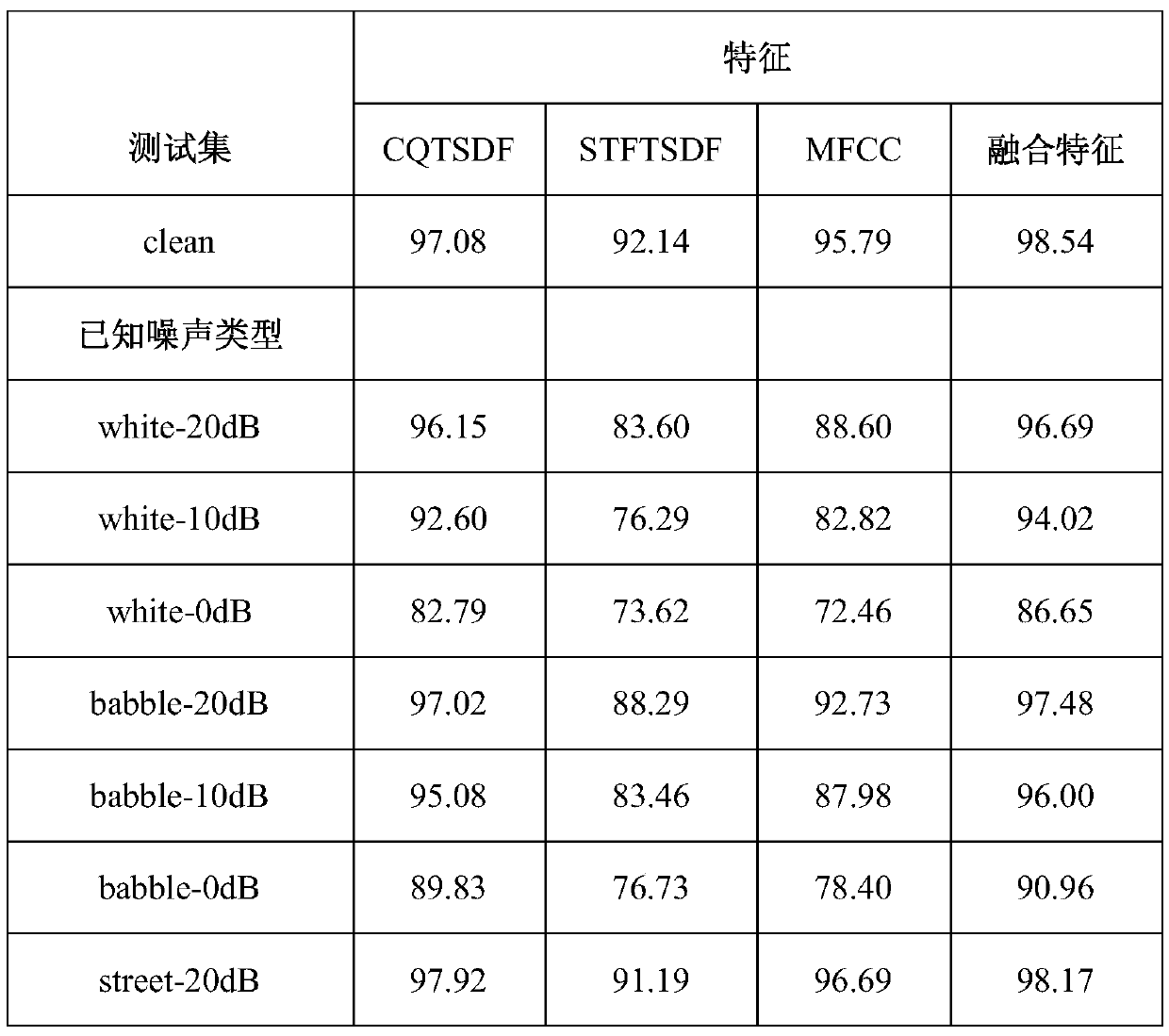Cell phone source recognizing method under additive noise environment based on fusion features
A technology that integrates features and additive noise. It is used in speech analysis, instruments, etc., and can solve problems such as poor robustness and difficult recognition.
- Summary
- Abstract
- Description
- Claims
- Application Information
AI Technical Summary
Problems solved by technology
Method used
Image
Examples
Embodiment Construction
[0036] The present invention will be further described in detail below in conjunction with the accompanying drawings and embodiments.
[0037] A method for identifying the source of mobile phones in an additive noise environment based on fusion features proposed by the present invention, its overall realization block diagram is as follows figure 1 As shown, it includes the following steps:
[0038] Step 1: Select M mobile phones of different mainstream brands and models; then use each mobile phone to obtain P speech samples corresponding to N individuals, and each mobile phone corresponds to a total of N×P speech samples; All speech samples constitute a subset, and a total of M × N × P speech samples of M subsets constitute a basic speech library; wherein, M≥10, M=24 in this embodiment, N≥10, in this embodiment Take N=12, P≧10, and take P=50 in this embodiment.
[0039] In this embodiment, in step 1, there are two ways to use each mobile phone to obtain P voice samples corre...
PUM
 Login to View More
Login to View More Abstract
Description
Claims
Application Information
 Login to View More
Login to View More - R&D
- Intellectual Property
- Life Sciences
- Materials
- Tech Scout
- Unparalleled Data Quality
- Higher Quality Content
- 60% Fewer Hallucinations
Browse by: Latest US Patents, China's latest patents, Technical Efficacy Thesaurus, Application Domain, Technology Topic, Popular Technical Reports.
© 2025 PatSnap. All rights reserved.Legal|Privacy policy|Modern Slavery Act Transparency Statement|Sitemap|About US| Contact US: help@patsnap.com



